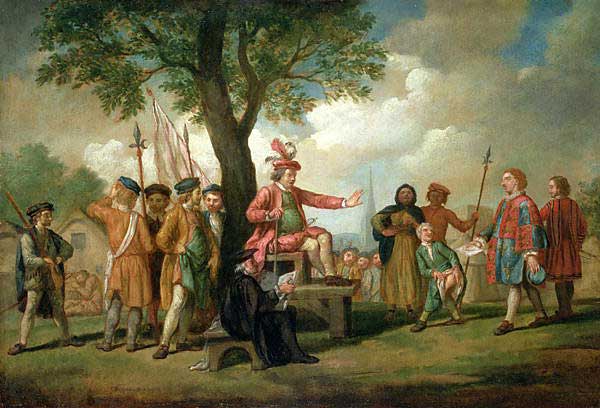Agrarian Class Structure
Relevant for sociology optional Paper- 2 (Unit- 12 : Social Structure)

Agrarian Class Structure in India is a topic of great significance in the field of sociology. Agriculture is the backbone of the Indian economy, and the majority of the population in India is dependent on agriculture for their livelihood. The agrarian class structure in India is characterized by the unequal distribution of land, unequal access to resources, and unequal distribution of wealth.
The agrarian class structure in India is divided into four classes: the landlords, the rich peasants, the middle peasants, and the poor peasants. The landlords or the zamindars are the owners of large tracts of land. They are the dominant class and control the economic and political power in the rural areas. The rich peasants are the owners of small plots of land and are relatively better off than the poor peasants. The middle peasants are the ones who own medium-sized land holdings and are the most vulnerable to economic fluctuations. The poor peasants are the landless labourers who work on the farms of the landlords and the rich peasants. They are the most exploited and marginalized section of the agrarian class structure.
The agrarian class structure in India is also divided on the basis of caste. The caste system in India has a significant influence on the agrarian class structure. The upper-caste landlords and rich peasants dominate the lower-caste poor peasants. The lower-caste poor peasants are subjected to various forms of discrimination and exploitation, such as low wages, poor working conditions, and denial of basic rights.
The agrarian class structure in India has undergone significant changes over the years. Land reforms were initiated after independence to redistribute land from the landlords to the poor peasants. However, these reforms were not very successful, and the landlords were able to retain their power and influence in the rural areas. The Green Revolution in the 1960s brought about significant changes in the agrarian class structure. The introduction of high-yielding varieties of crops and the use of modern technology increased agricultural productivity and led to the emergence of a new class of rich farmers who were able to take advantage of the new opportunities.
The agrarian class structure in India is also influenced by globalization and liberalization. The opening up of the Indian economy in the 1990s led to an influx of multinational corporations into the country. The emphasis on exports and cash crops led to a shift away from traditional crops and a decline in the importance of subsistence farming. The small farmers and poor peasants were the most affected by these changes and were unable to compete with the larger, more efficient farms.
The agrarian class structure in India is also affected by climate change. India is a country that is highly vulnerable to the effects of climate change. Climate change has led to changes in weather patterns and a decline in agricultural productivity. Small farmers and poor peasants who are dependent on rain-fed agriculture are the most affected by these changes.
In conclusion, the agrarian class structure in India is a complex system that is characterized by the unequal distribution of land, unequal access to resources, and unequal distribution of wealth. The class structure is also influenced by caste, globalization, liberalization, and climate change. Land reforms and the Green Revolution have brought about significant changes in the agrarian class structure, but more needs to be done to address the issues of inequality and exploitation in the rural areas. The government needs to take steps to protect the interests of small farmers and poor peasants and ensure that they have access to resources and opportunities to improve their livelihoods.
For more such free UPSC notes, Articles, News & Views Join our Telegram Channel. https://t.me/triumphias
Click the link below to see the details about the UPSC – Civils courses offered by Triumph IAS. https://triumphias.com/pages-all-courses.php


